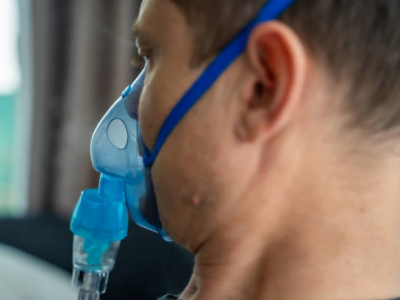H7N9 cases detected in Beijing and Shanghai
The H7N9 avian influenza virus has sickened two more people in China. The infections were detected in two of the country's biggest cities: Beijing and Shanghai.
A report today from Hong Kong's Center for Health Protection (CHP), citing mainland health officials, said Beijing's case involves a 68-year-old man whose illness is classified as an imported infection from Hebei province in the northern part of the country. The man has a history of exposure to live poultry and is hospitalized in critical condition. The case is the first to be detected in Beijing during the latest wave of H7N9 illnesses.
Shanghai's patient is a 58-year-old man who is being treated. No other details were available. His H7N9 illnesses is the fifth from city to be reported in the current wave of activity, though some of the earlier patients had connections to other provinces.
Last week China topped the number of infections reported during the second H7N9 wave, which took place during the winter of 2013-2014 only a few months after the first infections were detected in humans. The country now has at least 347 cases for the current wave of activity.
Feb 13 CHP statement
Feb 10 CIDRAP News story "China now in its worst H7N9 avian flu season on record"
New study describes role of Ebola super-spreaders
A new study in the Proceedings of the National Academy of Sciences (PNAS) says that super-spreaders likely transmit up to 61% of Ebola virus cases.
Though the "super-spreader" phenomenon, where certain patients disproportionately transmit the disease to others, is well-known in viruses such as SARS or MERS-CoV, it has not been studied in Ebola virus. To do so, researchers used outbreak data from Sierra Leone to build a model that showed the effect super-spreaders had on Ebola transmission.
The authors looked at data collected from Ebola treatment centers from October of 2014 through March of 2015. They found the basic reproductive number, or the number of cases one patient infected in a naive population, was 2.39. The average incubation period was 6.74 days.
A key driver in super-spreading was age. Patients younger than 15 and older than 45 years were more likely to spread the disease. The authors suggested that these patients were more likely to have increased contact in households and with caregivers, and were particularly dangerous in the early days of incubation.
"A substantial proportion of secondary cases were either direct or indirect descendants of a small number of super-spreaders, underscoring the importance of super-spreading in driving the epidemic − that is, had the super-spreaders been identified and quarantined promptly," the authors write.
Feb 13 PNAS study
Unique stewardship strategy increases ID consultations, study finds
The implementation of a "handshake stewardship" program at a children's hospital led to a significant increase in infectious disease (ID) consultations, according to a new study in Clinical Infectious Diseases.
In the quasi-experimental retrospective cohort study conducted at Children's Hospital Colorado in Denver, researchers compared rates of initial ID consultations before and after implementing a unique type of antibiotic stewardship program (ASP)—called "handshake stewardship"—that expands on the prospective audit and feedback approach. Handshake stewardship involves daily review of prescribed antimicrobials at 24 and 72 hours, real-time decision support for rapid diagnostic test reporting, and in-person communication between the stewardship team and attending physicians, regardless of whether there are ASP interventions.
A comparison of the pre-implementation phase (October 2010-September 2011) to the post-implementation period (October 2013-September 2015) showed that mean monthly ID consultations rose from 31 per 1,000 admissions to 42, an increase of 35%.
The authors of the study note the findings run contrary to the concern—expressed by ID providers in a recent survey—that ASPs would lead to a decrease on ID consultations and a loss of income. In addition, they note that ASP-recommended ID consultations only accounted for just over half of the additional ID consultations per month observed after implementation of the program. They argue that this could be an indirect benefit of the handshake stewardship approach.
"Daily in-person rounds leads to visibility and familiarity among the inpatient medical teams, breaking down barriers to units that may previously have little interaction with infectious disease providers," the authors write. "The 'Handshake Stewardship' approach provides a unique opportunity for a bi-directional exchange of information and education, often resulting in consultation."
Feb 10 Clin Infect Dis abstract
Oral cholera vaccine safety in pregnancy
The killed oral cholera vaccine poses no increased risk for pregnancy loss or adverse birth outcomes when administered to pregnant women, according to a new study published in Vaccine.
Cholera vaccines are not currently recommended for use in pregnant women because of unknown safety risks, but infection with cholera in pregnancy can cause severe complications, including death. In this study, 48,414 Bangladeshi women were questioned about cholera immunization status during a 2011 vaccine campaign. Of the 286 women who received the killed oral cholera vaccine (Shanchol) while unknowingly pregnant, 69 were available for follow-up surveillance.
Sixteen percent of pregnant women who received Shanchol experienced pregnancy loss, compared to 12% in the control group. Researchers said there was no increased risk in pregnancy loss after using models that controlled for adjusted baseline characteristics.
"While more studies are needed, this study supports a recommendation that killed OCVs may be given to pregnant women, for whom a judgment is made that the benefit outweighs the risk, taking account of the epidemiological context of cholera vaccination," the authors write.
Feb 11 Vaccine study
Seroprevalence study finds immune system clues in WNV infection
Seroprevalence testing for West Nile virus (WNV) among adults in Connecticut, where the disease is endemic, shows higher seroconversion levels in immunocompromised people, though age didn't seem to be a significant seroconversion factor. A team from Yale University and Columbia University published their findings in a Feb 10 early online edition of Emerging Infectious Diseases.
They looked at blood test results and demographic information from 1,063 adults—890 nonimmunocompromised and 173 immunosuppressed—who were enrolled in a study on immunity and aging. They compared the results with symptomatic WNV patients reported to the Connecticut Department of Health from 2000 to 2014. Previous exposure to WNV was measured by immunoblot testing for the WNV envelope protein. For the positive samples, they screened for cross-reactivity to other flaviviruses.
Evidence of WNV exposure was seen in 76 (8.5%) of the nonimmunosuppressed group, none of whom had reported symptoms or were diagnosed with infection. Of 173 immunosuppressed participants, 29 (16.8%) showed evidence of infection. The rates of seroconversion for the two groups did not vary significantly by age or sex, but levels were higher among Hispanic groups, possibly because of different exposure histories. Researchers said the mean age for symptomatic cases reported by the health department was higher than that of the asymptomatic cases, suggesting that age remains a factor for disease susceptibility. They also noted that higher seroconversion rates in the immunosuppressed group might reflect underlying medical conditions or medication regimens.
Though environmental conditions affect mosquito vectors, individual factors such as immune status might play a key role in susceptibility to infection and severe disease, the group wrote.
Feb 10 Emerg Infect Dis report














